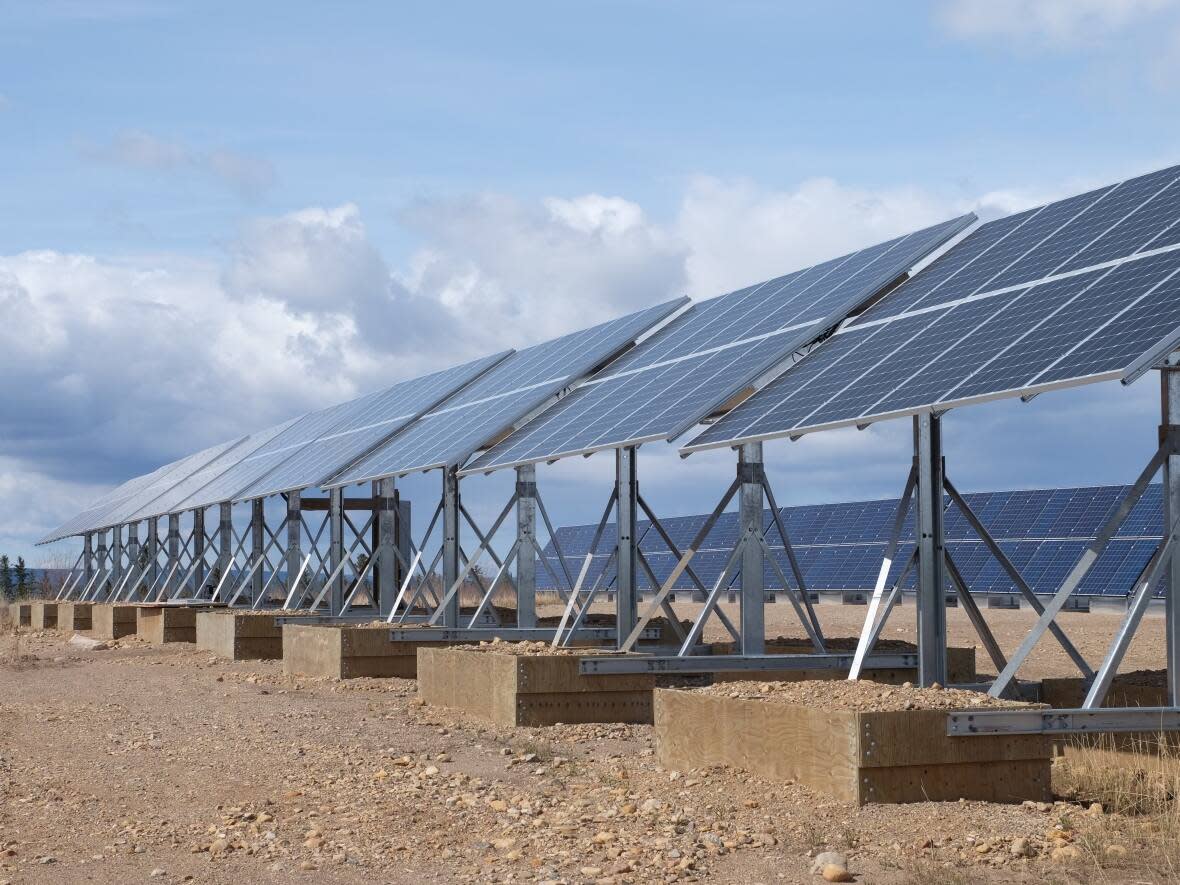Want to offset diesel consumption by solar power in the N.W.T.? There's a cap for that

Communities in the N.W.T. that rely on diesel generators for power could handle up to 45 per cent of their electricity coming from renewable energy sources, according to a new study, and now it's up to the government to decide whether to make the change.
Right now, the cap is at 20 per cent.
Robert Sexton, the territory's director of energy, said the limit was set back in 2014 to make sure power grids remained stable and to keep electricity prices down. It reflected an amount of renewable energy that would allow diesel generators — which many communities rely on for power — to keep running efficiently, he explained.
However, in response to communities' growing interest in creating their own renewable power, Sexton said the territory commissioned a study to re-examine that cap. It became publicly available last month.
CIMA+, the engineering company hired to do the research, studied infrastructure in Fort Liard, Fort Simpson, Tulita, Łútselk'e and Inuvik. It concluded all diesel communities in the territory could handle up to 45 per cent of their power coming from renewable sources — such as solar panels, wind turbines or hydropower — without compromising the reliability and consistency of their power.
"We were surprised it was that high," said Sexton.
Renewable power a 'good thing' in communities
The acting manager of the PolarGrizz Hotel in Sachs Harbour, Sharan Green, said it would be a "good thing" if the territory allowed her community to create more renewable energy.
Even though the hamlet has no daylight in the winter, she said the hotel saves money because of its solar panels. Green knows more people in the community who are interested in panels too — but haven't been able to get them because Sachs Harbour has already hit the 20 per cent cap.
"More is better," she said. "We're saving on the power bill. It helps us. It takes time, but it helps us."
An increase would also be welcome news for a renewable energy project that's underway in Łútselk'e, according to Haroon Bhatti, the innovations manager for Denesoline Corporation.
The corporation is helping build a clean-energy power plant, made up of solar panels, wind turbines and batteries, that aims to wean Łútselk'e off its diesel generator by 2026.
"That ultimately means that we can sell more energy back to the grid, which of course, is a good thing," he explained.
Bhatti said renewable power that can't be sold to the grid will be stored in the batteries, where homes in the community would still be able to access it.
"I appreciate that people are thinking about increasing those sorts of caps so that the renewable energy sector can grow. And ultimately, that's what we would like to do."
Łútselk'e became the first independent power producer in all three territories in 2016, after building a $350,000 solar array. Sexton said if they were able to double the amount of renewable they sell, they could double their revenue.
A balancing act
Increasing the cap, however, is more complicated than it may sound. Sexton said the change would happen gradually, if at all, and the territory would need to find a way to keep electricity prices down for other customers.
"Utilities incur costs to produce the electricity that they sell… [And] they pay for that through the electricity they sell," he said.
Whenever someone installs a solar panel on their home, for example, they buy less electricity. But the cost to the utility — for the energy infrastructure and its maintenance — stays the same. That forces the utility to raise the price of electricity for its remaining customers.
"No decision has been made as to whether or not to do this, because there's a competing issue there where if you allow more self-generation, you also end up increasing electricity rates."
The territory's 2030 energy strategy says turning diesel into electricity in communities that aren't connected to hydroelectric grids creates 72 kilotonnes of greenhouse gas emissions per year. That's the equivalent of consuming 596,475 barrels of oil, according to Canada's greenhouse gas equivalencies calculator.
In order to reach its goal of reducing overall emissions by 30 per cent by 2030, the territory has to reduce its emissions by another 283 kilotonnes. In the 2020-21 fiscal year, the territory reduced its emissions by just 3.6 kilotonnes.
Sexton said the need to reduce greenhouse gas emissions from diesel generators, the need to keep electricity as affordable as possible, and the need to let people offset their bills by generating their own renewable power is a "balancing act."
In an effort to figure out a way forward, Sexton said the territory also commissioned recent studies on electric vehicles and a net-metering program (which compensates people for adding renewable energy to the grid) so the territory can consider its power needs at the same time.
The current energy action plan expires at the end of March, he noted, and the upcoming action plan — to be released in 2023 — "will have some answers as to what we're going to do with all of this."


